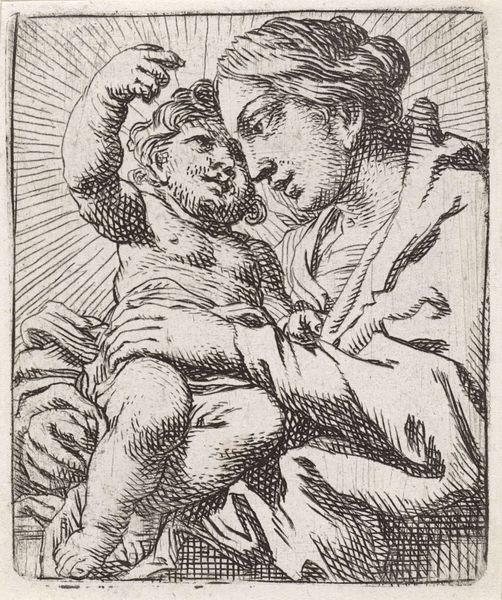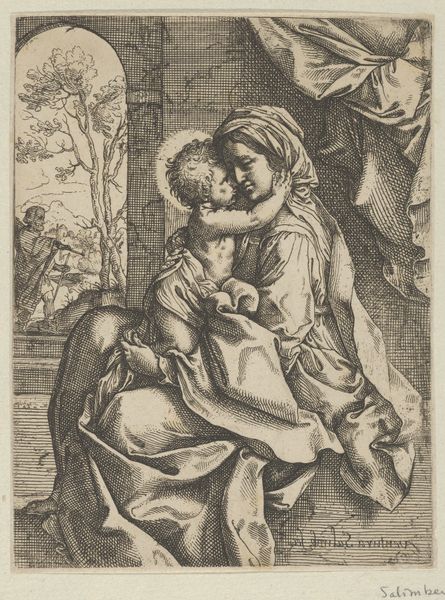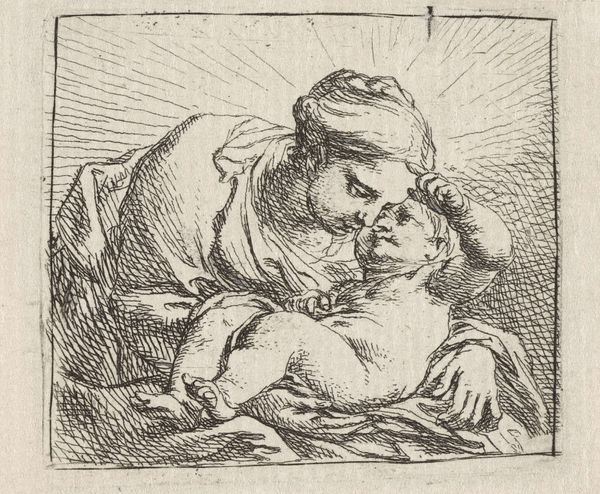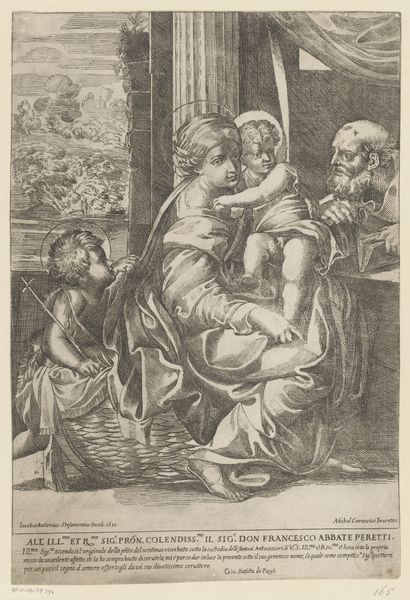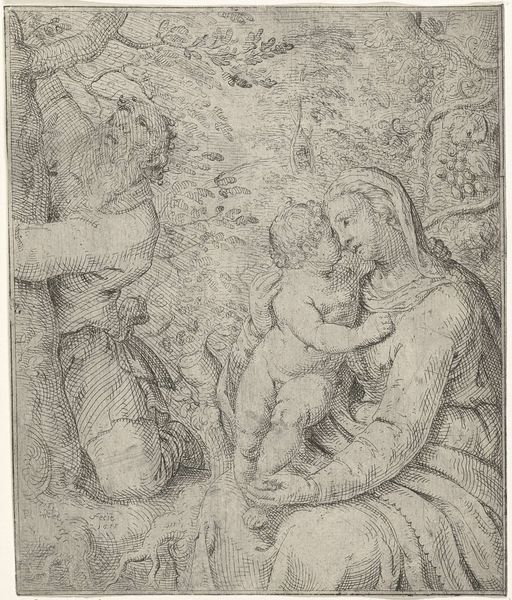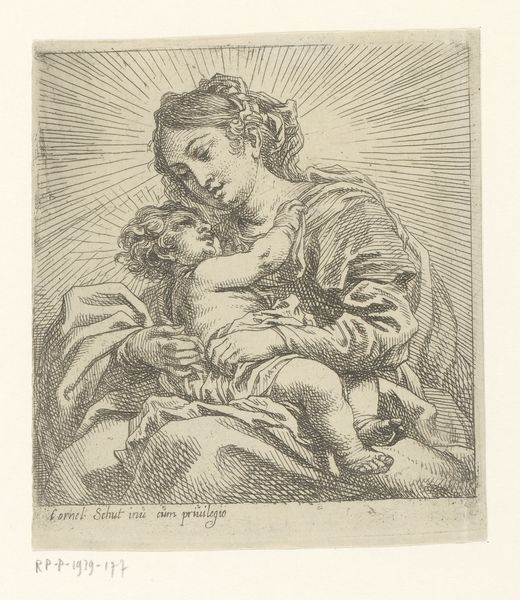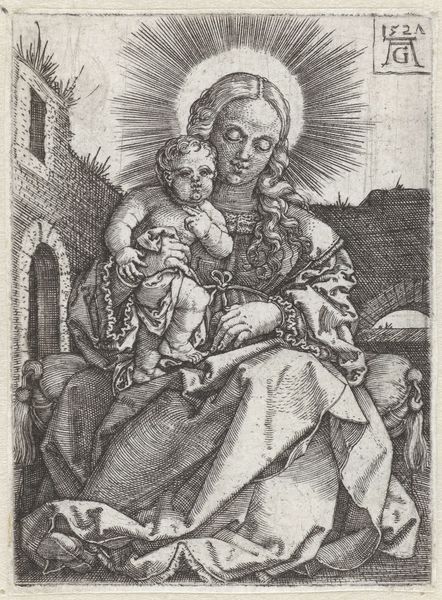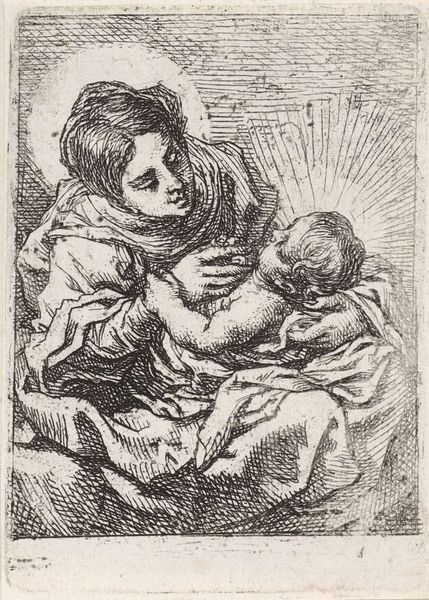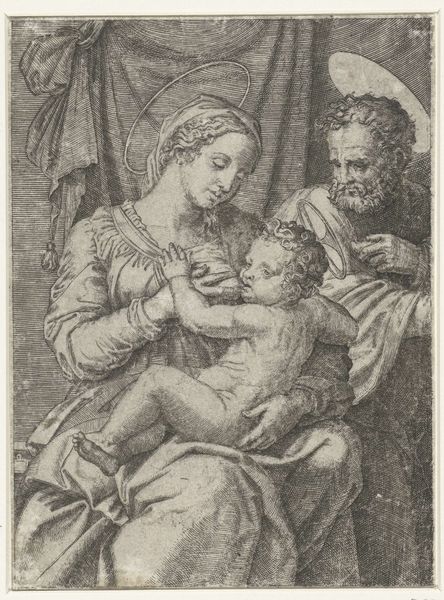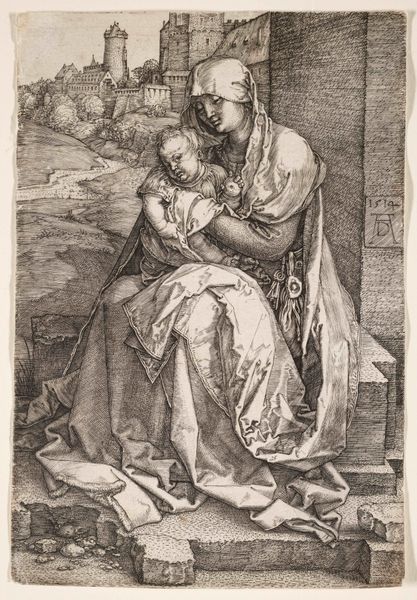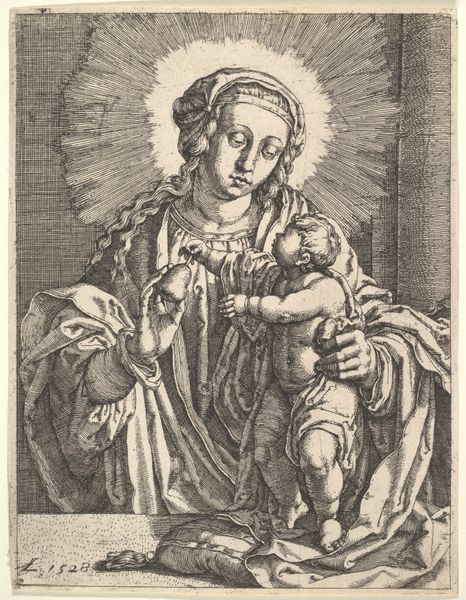
engraving
#
portrait
#
old engraving style
#
figuration
#
11_renaissance
#
history-painting
#
northern-renaissance
#
engraving
Dimensions: height 120 mm, width 87 mm
Copyright: Rijks Museum: Open Domain
Editor: Here we have Jan Gossart’s engraving, "Madonna met Kind," created in 1522. I am really struck by the intricacy of the lines and how they create a sense of tenderness in this monochrome composition. How do you interpret this work focusing on its formal qualities? Curator: This engraving presents a sophisticated use of line to define form and texture. Notice how Gossart manipulates the density and direction of the hatching to model the figures of Mary and the Christ Child. Where does your eye naturally gravitate first and why? Editor: I’m drawn to Mary’s face; the way her eyes are cast down creates such a poignant expression, further enhanced by the soft, curving lines around her face. The contrasts of the cross hatching emphasizes this form as well as her left arm protectively wrapped around Jesus. But then there is a really high level of detail on Christ’s curls as well. Curator: Precisely. Observe how the variations in the depth of the engraved lines suggest the play of light and shadow across the surface of the forms. It’s almost sculptural in its effect, wouldn’t you agree? Editor: Absolutely. It's fascinating how an engraving, which inherently lacks color, can still evoke such a strong sense of depth and dimension just by formal considerations alone. I also see he placed his signature or the name "Jenin Gossart" hanging to the side on the engraving. Curator: The balance is also important, as it counterweights the left arm and child. Moreover, the tactile quality is remarkable, isn’t it? How Gossart rendered fabrics and skin through varied engraving techniques reveals much about his technical mastery and formal priorities. Editor: I learned so much about how to look closely at details like lines and shading to better understand how a black and white work can portray realistic forms. Curator: And I relearned, by trying to articulate it, how such mastery of technique enhances the thematic power of a piece.
Comments
No comments
Be the first to comment and join the conversation on the ultimate creative platform.

